The feral/wild roses of lutruwita, dotted on roadsides and peeping out of gorse hedges, are most likely to be Rosa rubiginosa, I learn - the Sweet Briar Rose. Pink flowered.
A less likely option is that they’re the Dog Rose - Rosa canina - slightly larger and noted for their white (not pink) flowers.
Dog Rose has a Celtic history of the roots being used to cure rabid wolf-bites. So obviously, I want the local feral rose bushes, especially the one that has self-seeded at the front of our driveway, to be a Dog Rose.
But Dog Roses are far less common in lutruwita (according to Rees Campbell, who knows things), so… sweet briar rose. Hello.
I’m learning that working with one plant per moon might be plenty.
The idea of working with a plant a week was thanks to Morning Kirsten, who is the most focussed and by far the most excited. About everything. But after consideration, (and a bunch of Afternoon Kirsten’s where it became clear that researching, printing, learning about and working with recipes from a plant a week was well beyond my reality)… I’m going to shoot for getting to know one plant a month.
Introducing myself to, learning a little of the histories of, exploring, sitting with, working with, and listening to one plant friend per moon.
That seems a little more doable.
And… hooray. As soon as I realised this, the bushes of briar rosehips that I pass as I walk this valley in early autumn gave me a wave in the breeze.
So here we go.
Sweet Briar Rose. It is an honour to meet you and to learn from you, this moon.
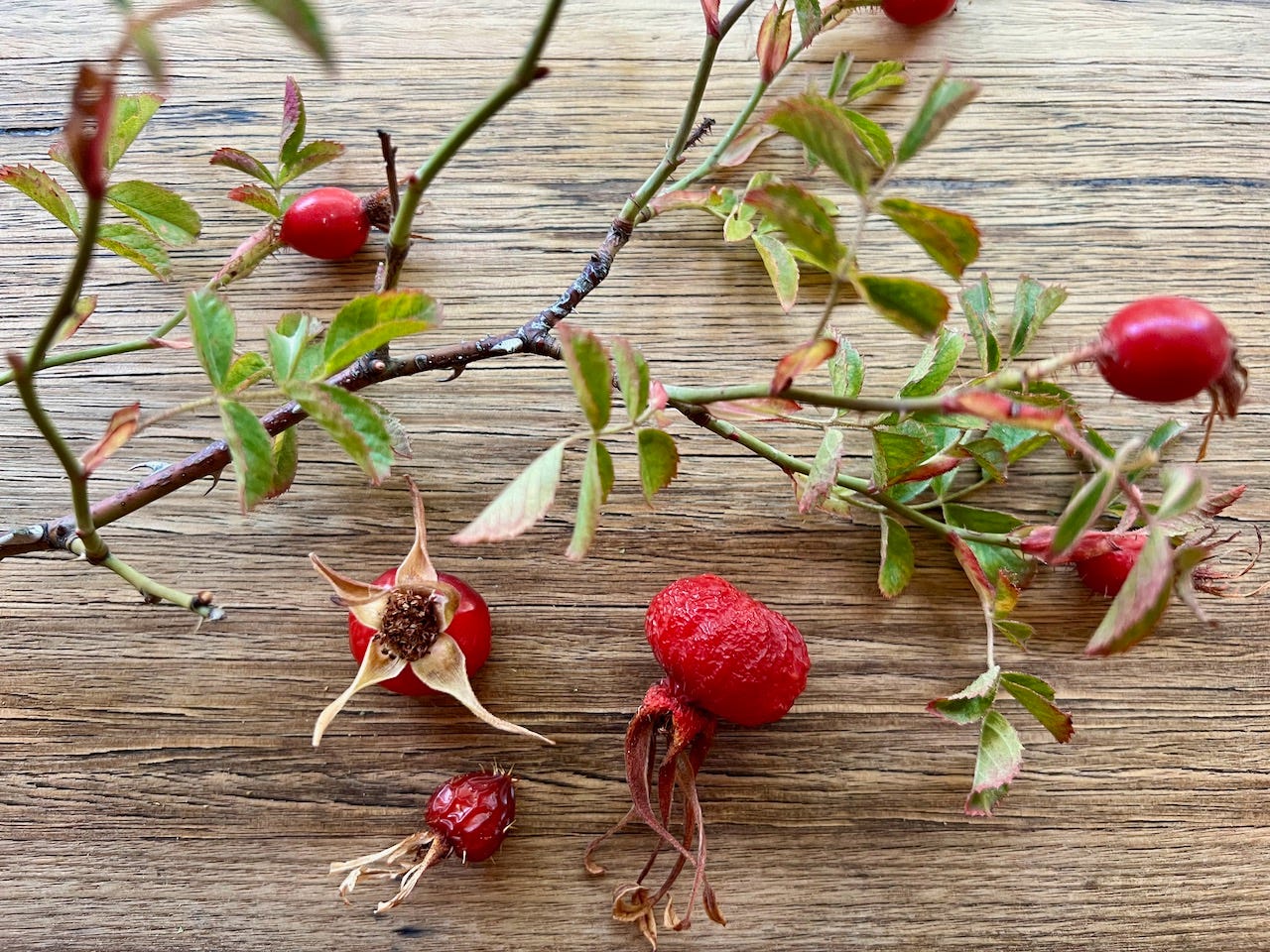
The world and histories of rose is vast, and rich and wide - originating in multiple places on our Earth at once… and then slowly coming together via ancient trade routes, and then century after century of rose lovers, cultivators and users.
There’s plenty of history on the cultivation of roses, and to be honest it looks like a bit of a shitfight in there, once you get into international rose cultivation politics.
“Have you ever been to a fight, and watch it turn into a Rose Meeting?” Apparently that is a rose cultivation club joke. You’re welcome.
But I’m here more to learn from and listen to the roses themselves. And those who know them as friends, as plantcestors. Their hips, and their roots. Their petals (not as many around, this time of year, but still, there’s some!) and their thousands of years of histories, of medicine, and nutrition, and heart-lifting beauty.
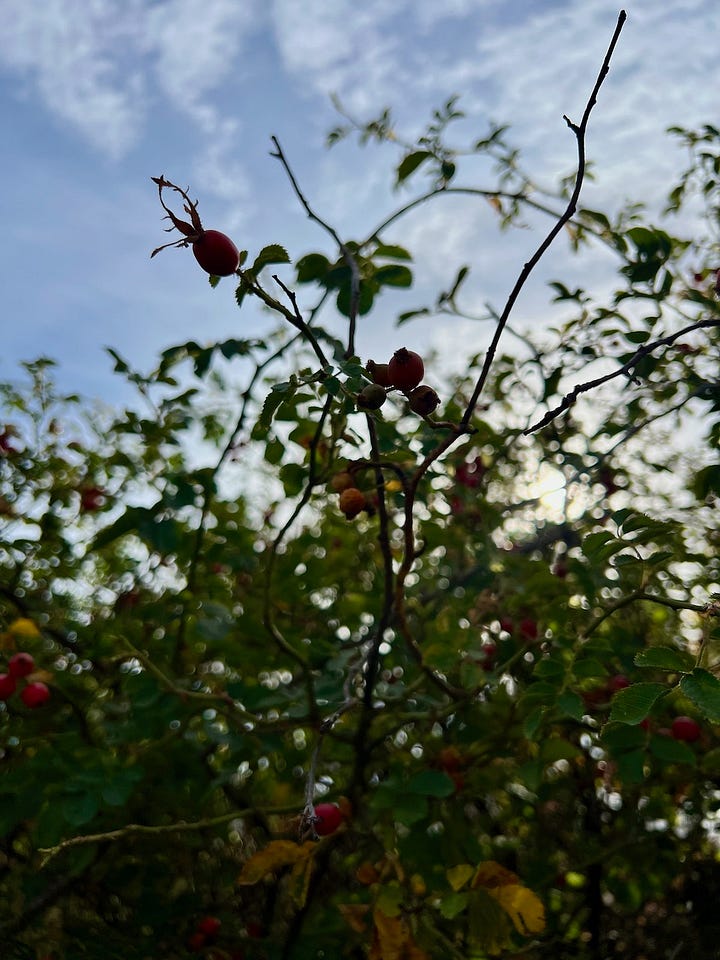
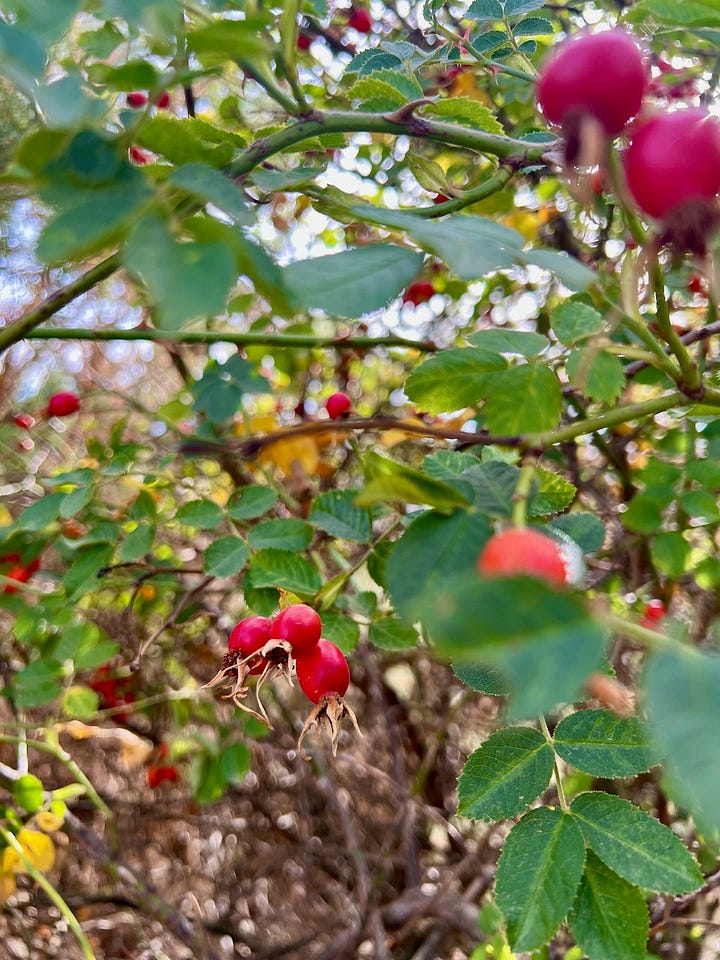
So many bushes of briars sat beneath, this month, listening to the wrens delight in their thorny protection (and the promise of oil-filled rosehip seeds for winter food). So many baskets of rosehips picked. So many prickles in my fingers. So much to learn, and to appreciate.
Cutting branches of briars with leaves and rosehips aplenty, bringing them home to my studio, and learning to print with them. Learning what first and second year wood looks like, and where the rosehips sprout from on the branches, and why.
How hardy their crooked branch structures are. Like lightning, with thorns, and smelling of apple. How unforgiving the sprigs are to press, unlike many more tender garden flowers. Lie flat? No thanks. Press me for weeks, under great weight? Still no.
Ok. So I learn.
Unearthing briar rose root structures (there’s one that I had to move anyway, it had self-seeded in a garden bed), to look at the roots in their tangle. To smell the earthy briar rose root smell. More medicine. I wonder if the dog rose roots (they of the wolf-bite-curing-kind) smell different to these ones?
I pull out all the books I have that seem likely to speak of roses, and their uses. A Tasmanian Foraging Guide, various Herbal Compendiums, ‘Slavic Kitchen Alchemy’ (what a winner) and fermentation books.
In short - Rose is a potent food, and medicine, and has been revered for thousands of years across many cultures. Every part can be used. Associated with the heart and circulatory system (amongst many other uses) in terms of it’s herbal efficacy…
…Rose is also a heart medicine, of the sore and hurting-heart kind. Of the grief-work kind. Of the bravery kind. Of the oh how we all ache in this time kind.
I resolve to learn how to prepare a yearly supply of Rosehip Heart Elixir, for my own heart, and for the many dear ones near to me. The wild rosehips in this valley are many. I’m grateful to be able to start immediately.
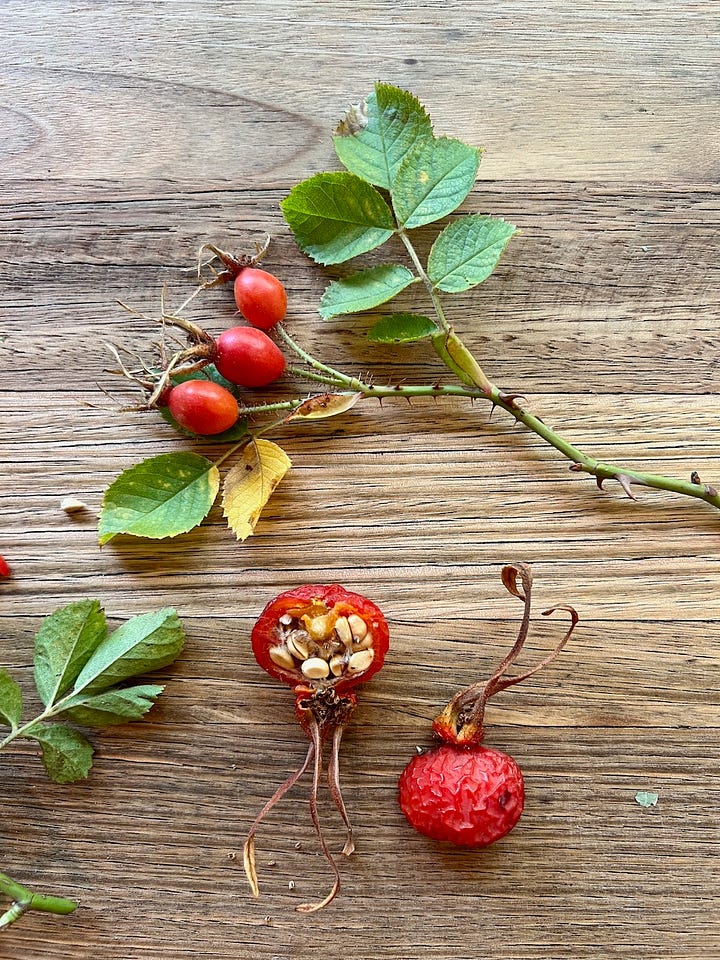
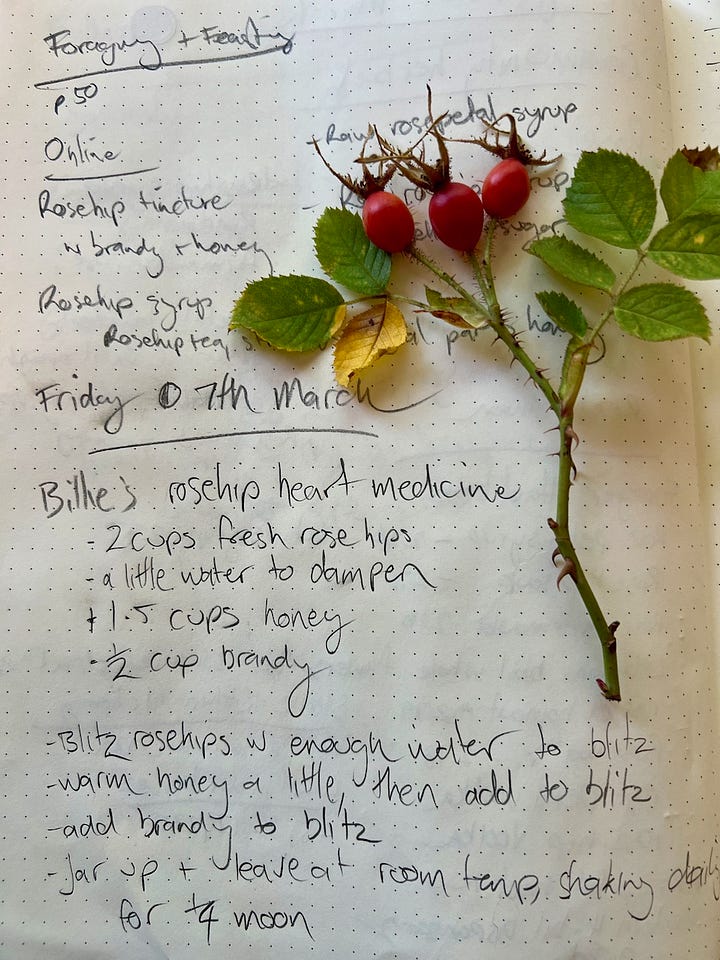
The guy at the tip shop, incidentally, recommends Treolar Roses - their catalog can be searched by perfume type or roses grown specifically for their hips. I set a timer when browsing the catalog so i don’t fall too deeply in love with so many possibilities.
Mira at the local supermarket lets me know that if you want REAL quality rose water, you have to source it straight from Lebanon. That’s just the way it is.
Another basket of feral sweet briar hips from the roadside, picked while the local family of piyura / turbo chooks honk at me indignantly with their prehistoric danger call (it’s really loud!). Home again to make more rosehip things.
The studio bench is sticky with honey. I have bought the cheapest vodka I could source. Also some brandy, which was harder to find than I assumed (after a youth of reading historical fiction in which brandy seemed to be everywhere and used for everything)...
Jars gathered, recipe pages already sticky, I get to work. This will take a while - many of the concoctions need half a moon of sitting, or shaking daily, or both.
But now…
Rosehip elixir / tincture is brewing
Rose petals packed into thin, stringybark honey are steeping
Rosehips fermented in leatherwood honey are bubbling
Rosehip Nalewka (polish vodka medicine) is steeping
Rose petal Nalewka is aging (after adding honey)
A bastardised Rosoliu (rose petal liqueur) is steeping, just because
Dried rosehips, everywhere…
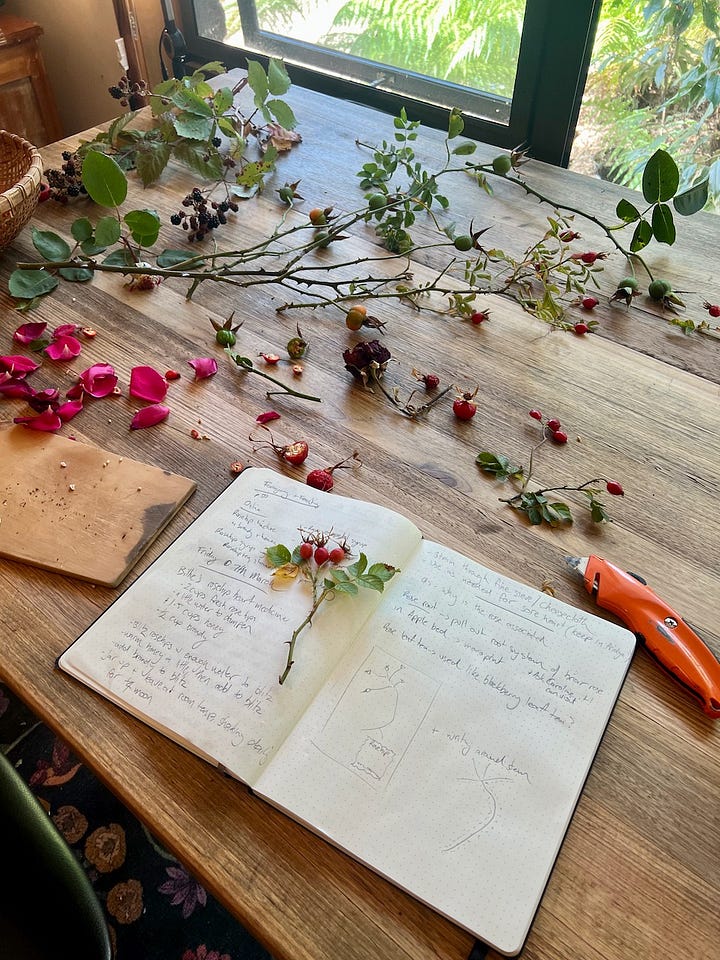

Cousin of apple, and blackberry. They’re actually prickles, not thorns - thorns grow out of the wood (like with Hawthorn, another plant cousin of rose). Also related to pear and almond - so many Rosaceae cousins.
I’m over halfway through this rosehip moon, now. My dreams are filled with them. I see them everywhere I go. The taste of rose petal tea in the back of my throat (surprisingly dry, like tannin, but with floral notes) is something I look forward to each day.
In the evenings I sip rosehip tea with honey, and play with cyanotypes, cutting rosehips into careful halves, to lay flat against the paper.

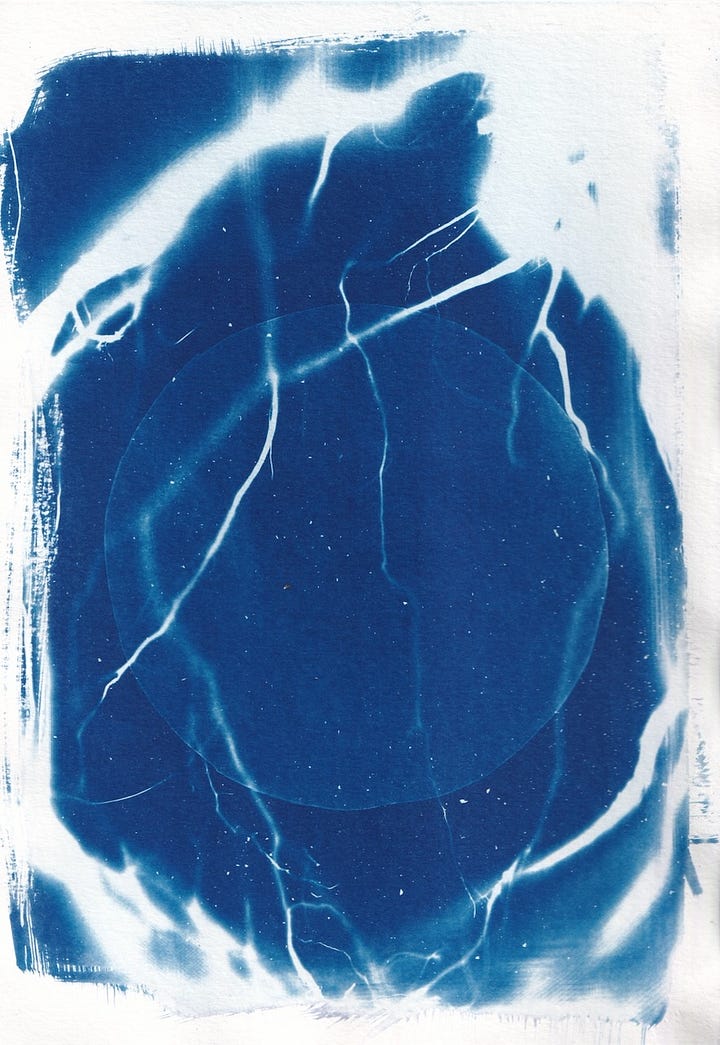
And just today I listened to a conversation, in which the most excellent Dori Midnight said (speaking of how to choose which plants to work with as a herbalist)…
“Like when I feel like there's a mutual courtship, I mean, who doesn't love a mutual courtship? You know, it's like, feels so right when you're like, oh, I want you pomegranate, and I think that you want me too. And so that's like a place to start.
And then I think, you know, about really simple and doable and accessible practices, like just placing that object, placing that plant on your altar, carrying it around in your pocket, like it's a courtship. So like, what do you do? You hang out with a person.
When you're trying to date somebody, you like make them little gifts. You call and check in on them. You listen to them.
You hang out with them. You sleep with them. Maybe you take a bath with them.”
“It's the same with plants… essentially like hang out with that plant, listen to that plant, journal with that plant, move with that plant, dance with the plant, play music for the plant, place it everywhere you go, talk about it. Really just date it and bring your best dating practices to being grateful and loving and a good listener.”
(From the Jewish Ancestral Healing podcast)
And in between all the making and dating and gathering and printing and sticky fingers, I’m learning to listen.
As I sip as much rosehip tea as I can hold. And then, listen some more.
A few Rose resources of the reading kind, from these last two weeks:
The Land in our Bones - Plantcestral Herbalism and Healing Cultures from Syria to the Sinai - Earth-based pathways to ancestral stewardship and belonging in diaspora - Layla K. Feghali
Slavic Kitchen Alchemy - Zuza Zak
Rosa damascena - Gernot Katzers Spice Pages
Rosehip Syrup - Herbal Academy
And a note that I’ll post all the recipes for the concoctions above before the end of the month, so you can fall in love with wild roses and their hips, too.

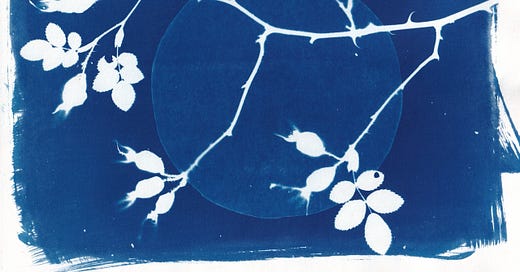




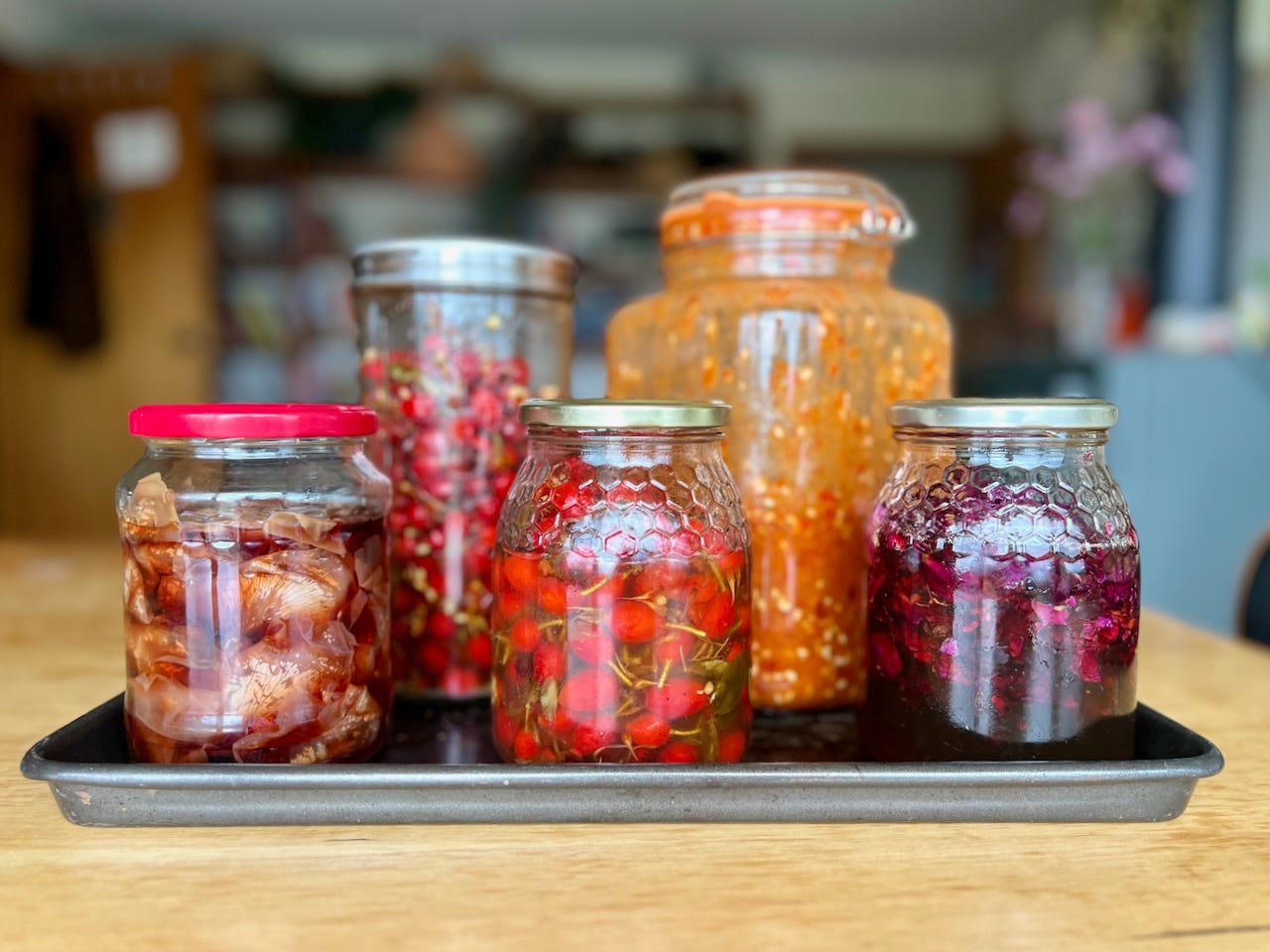
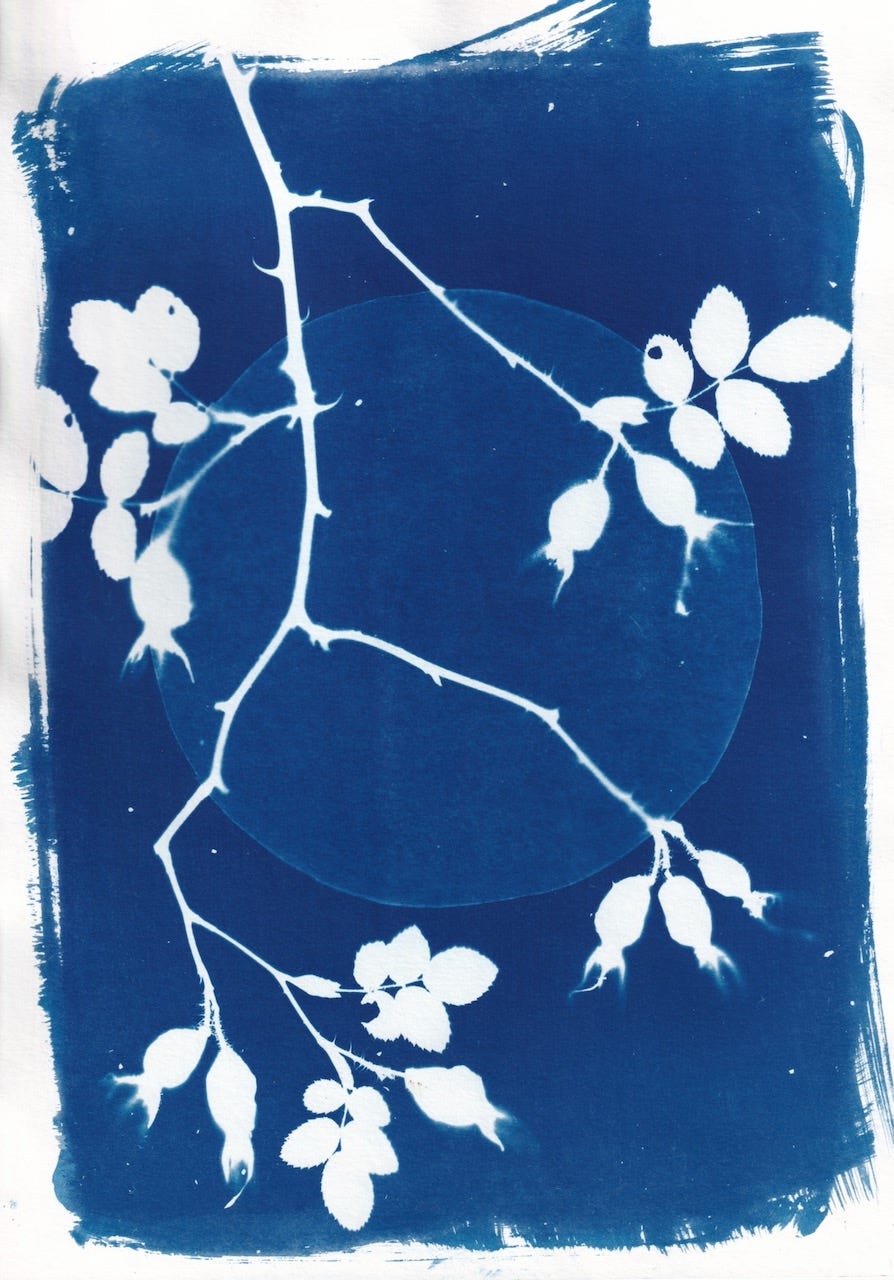
Yay so glad you’re writing here, these are gold.
Your morning/afternoon self made me laugh. My afternoon Leon does all the to-do list writing, it’s a bit more realistically manageable.
Oh my! What an unexpected lunch break, to find you on Substack and read your journey over the past few months, tears, beauty and laughter. Thank you. Afternoon Gillian or Morning Gillian- that shall be a new filter for my schemes. Xo